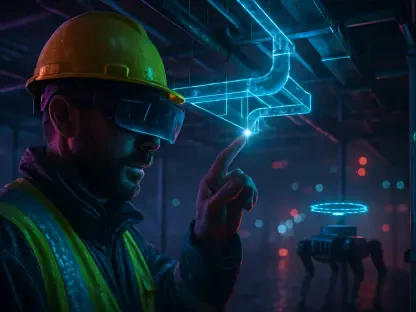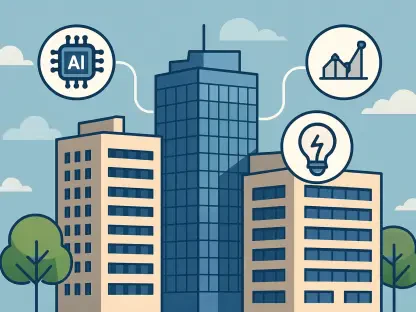The construction industry in Australia has historically exhibited resistance towards adopting new technologies due to ingrained risk assessments and an overall aversion to change. Over the past five years, there has been a notable shift, with the perception of risk evolving to foster a more innovative mindset. While the transformative potential of artificial intelligence (AI) in construction remains largely untapped, industry players are beginning to acknowledge its promise for streamlining processes and enhancing decision-making. This shift in outlook is gradually paving the way for AI to fundamentally reshape the sector’s dynamics.
Shifting Mindsets: The New View of Data
Traditionally, construction professionals have viewed data primarily as a tool for resource planning, budget management, and quality control. Recently, however, this perception has started to evolve. Data is now seen as an invaluable asset for making informed decisions that can significantly impact project outcomes. Platforms like the Autodesk Construction Cloud (ACC) have played a pivotal role in this transformation, helping professionals understand the practical benefits of data-driven decision-making. ACC’s comprehensive suite of digital tools has enabled a paradigm shift, illustrating how data can optimize various aspects of construction projects.
The COVID-19 pandemic further accelerated this shift by disrupting supply chains and limiting access to physical job sites. Faced with these challenges, construction companies were compelled to rely more heavily on advanced technology. This period of adaptation highlighted the benefits of efficient data management and collaborative digital tools, leading to a greater willingness to experiment with new technologies. Companies began to appreciate how these tools could improve operational efficiency, foster collaboration, and adapt swiftly to changing circumstances. As the industry continues to embrace a data-centric approach, the integration of AI technologies promises to unlock new levels of productivity and innovation.
Practical Applications and Early Trials
In an effort to leverage AI, the construction industry is actively testing various applications, including predictive data analytics to enhance project decision-making. These trials are crucial for converting raw data into actionable insights, supporting different projects ranging from small developments to large-scale infrastructure initiatives in the UK and Australia. Among the noticeable early experiments are energy-efficient design solutions and refined supply chain processes. These projects aim to predict material shortages, delays, and other cost implications, thereby ensuring better preparedness and more efficient project execution.
Despite the promising initial applications, many in the construction industry remain hesitant to abandon traditional methods, with entrenched resistance to change posing a significant barrier to widespread adoption. The gradual introduction of AI reflects the industry’s cautious approach, emphasizing the need for thorough testing and validation before fully committing to new technologies. However, as more success stories emerge from these early trials, the outlook towards AI is likely to become progressively more favorable. AI holds the potential to revolutionize construction management, offering significant improvements in cost savings, efficiency gains, and risk reduction.
Careful Integration and Change Management
For AI to gain widespread acceptance within the construction industry, a gradual and carefully managed introduction is essential. Instead of overhauling entire systems overnight, companies should adopt new software incrementally, integrating it into existing processes through test and trial stages. This measured approach allows for improvements to be made alongside current operations, ensuring a smoother transition and minimizing disruption. Effective change management will be critical for the industry’s overall growth and enhancement, ensuring that workers are adequately trained and stakeholders are engaged throughout the process.
As AI becomes more integrated into construction workflows, its potential to automate routine tasks and support preemptive risk management will increasingly be recognized. This automation can free up teams to focus on critical decision-making and high-value work, ultimately enhancing overall project efficiency. AI’s ability to improve procurement efficiency and maintain project timelines can be further amplified when combined with Building Information Modeling (BIM). BIM provides real-time data that drives automation and improves accuracy, creating a synergy that boosts the overall impact of AI in the construction industry.
The Future Potential of AI in Construction
Historically, the construction industry in Australia has been hesitant to embrace new technologies due to deep-seated risk assessments and a general unwillingness to change. However, over the past five years, this stance has noticeably evolved. The perception of risk has shifted, encouraging a more innovative approach within the sector. Although the transformative potential of artificial intelligence (AI) in construction remains largely unexplored, industry stakeholders are beginning to recognize its promise for streamlining operations and improving decision-making processes. This evolving perspective is gradually paving the way for AI to fundamentally alter the industry’s dynamics. Additionally, AI’s potential extends to enhancing project management, optimizing resource allocation, and improving safety standards on construction sites. As the industry continues to adapt, integrating AI could lead to more efficient, cost-effective, and safer construction practices. This progressive change signifies a crucial step towards modernizing an industry traditionally resistant to technological advancements.









